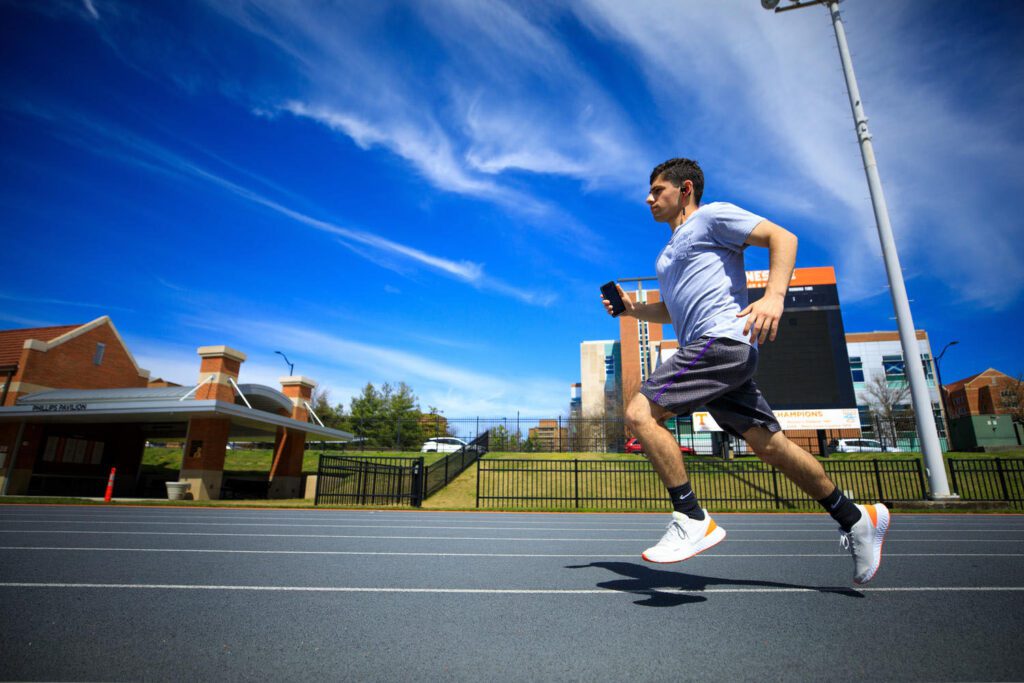The Intersection of Mathematics and Marathon Running
Cameron Cook, a passionate long-distance runner and a PhD graduate in mathematics from the University of Tennessee, Knoxville, has uniquely combined his scholarly expertise with his love for running. As he competes in marathons, he relies on a strategic nutrition plan that includes five 100-calorie gel packets to fuel his body over the enduring 26.2 miles. This combination of mathematics and nutrition is not just about sustenance; it is about optimizing performance.
A Predictive Model for Marathon Nutrition
Recently, Cook completed his tenth official marathon, remarkably finishing in two hours, 37 minutes, and 14 seconds—only one minute shy of what his predictive model had anticipated. During his doctoral research, Cook developed an innovative model that incorporates nutritional factors into long-distance running, focusing on how these factors influence a runner’s energy levels and pacing strategies.
Using Elite Runners for Simulation
To validate his model, Cook used the nutritional approach of world-renowned marathon runner Eliud Kipchoge as a benchmark. Kipchoge completed a historic marathon in just 1:59:40, while Cook’s model estimated a time of 1:59:09, showing an impressive 0.4 percent deviation or merely one second per mile. This accuracy offers promising insights into optimizing race performance through scientific modeling.
Learning from Experience
Cook’s interest in marathon nutrition was sparked when his advisor introduced him to various mathematical research papers focused on race strategies and optimization. He realized that existing models often overlooked nutrition’s critical role in marathon running. Unlike track races, where energy depletion is less apparent, marathon runners face unique challenges related to endurance and energy management.
Collaboration and Discoveries
To delve deeper into the science of nutrition, Cook collaborated with Guoxun Chen, an associate professor specializing in nutritional responses. Together, they explored how glucose intake impacts performance, leading to significant findings about optimal nutrition. Initially, Cook’s model suggested unlimited energy intake would enhance performance, but he quickly learned that excessive sugar consumption could hinder physical performance, much like overindulging during Halloween can leave children feeling unwell.
The Mechanics of Performance Optimization
Through extensive research, Cook identified vital variables that inform his model, such as a runner’s weight, energy levels, and lactate clearance rates. He consulted Kevin Sprouse, a physician working with elite athletes, to incorporate VLamax—maximum lactate production—into his equations. This crucial parameter differentiates professional marathoners from recreational runners, shedding light on the pacing and endurance strategies necessary for sustained performance.
Future Aspirations and Coaching Influence
As Cook works to refine his racing techniques, he also embraces his role as a coach for the UT Running Club in Knoxville. His coaching experience has aligned with his research, allowing him to share insights and strategies with student athletes. With an ambitious goal of qualifying for the Olympic trials, Cook’s next target is to shave off seven minutes and 14 seconds from his previous marathon time. This pursuit exemplifies how combining passion with expertise can lead to groundbreaking results in both athletics and academia.
If you are interested in understanding more about the intersection of marathon performance and nutrition, consider exploring the work of researchers like Cameron Cook for insights and techniques that can help improve your race outcomes.
